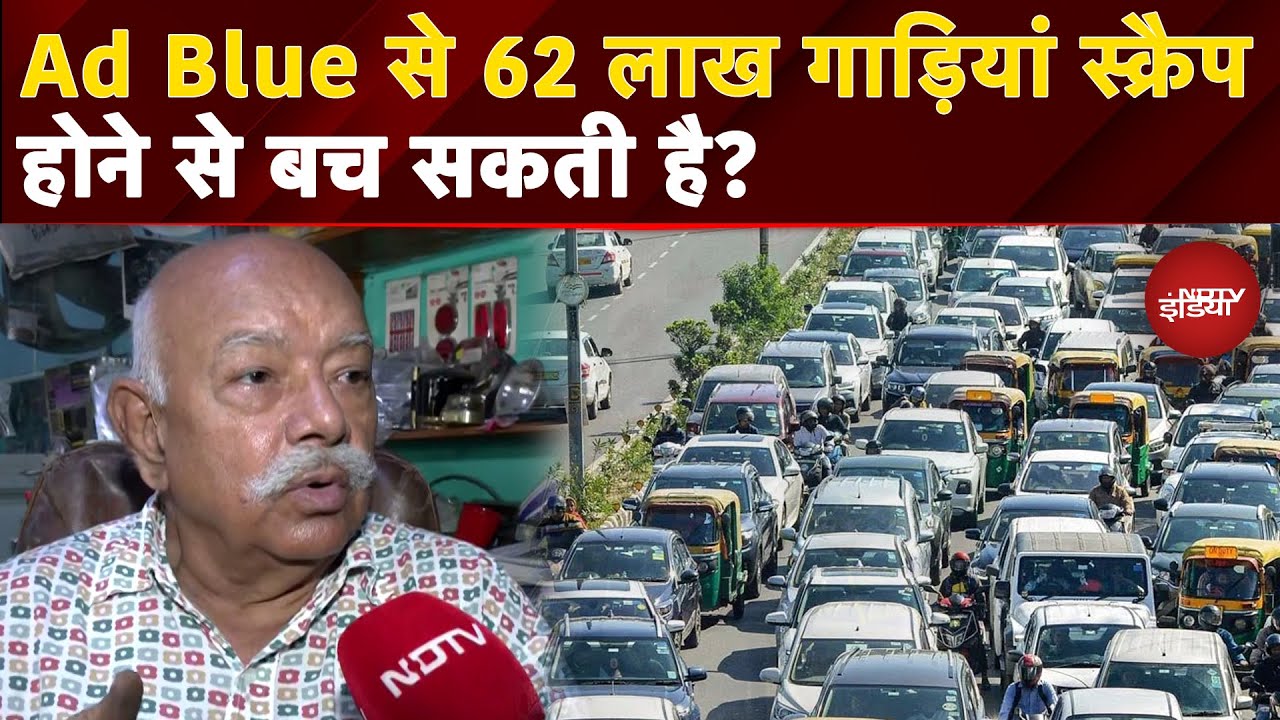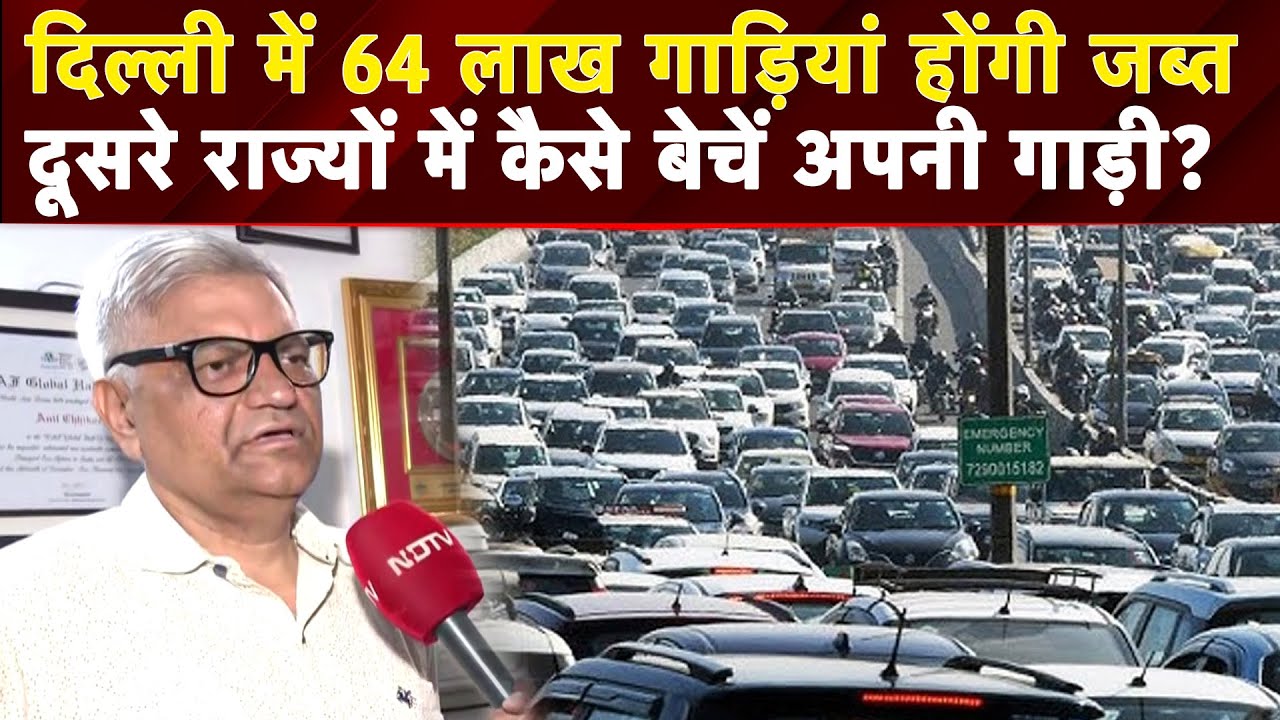- Home/
- Delhi Air Quality Now "Severe", Most Polluted Day Of The Season So Far
Delhi Air Quality Now "Severe", Most Polluted Day Of The Season So Far
Air pollution in Delhi is at its highest since January, with some areas in the National Capital Region reporting "severe" category air quality. According to the latest forecast, it's set to worsen and remain in the "very poor" category over the next three days, which can trigger health advisories.
The Air Quality Index at Anand Vihar in Delhi was 455 at 4 pm, making it one of the most polluted areas here.
At 5 pm, Delhi had an overall AQI of 357, Ghaziabad 384, Noida 371, Greater Noida 364, and Faridabad 346.
Not just Delhi, from Punjab to Uttar Pradesh and Bihar, air quality in 34 Indian cities is in the 'very poor' category.
An AQI between zero and 50 is considered 'good', 51 and 100 'satisfactory', 101 and 200 'moderate', 201 and 300 'poor', 301 and 400 'very poor', and 401 and 500 'severe'.
Experts say the deterioration in the quality of air is because of the wind direction and wind speed, which is causing the accumulation of pollutants coupled with an increase in incidents of farm fires.
Pollution around Diwali was the lowest in 7 years, as the weather conditions were a game changer. The air quality in the national capital started deteriorating from October 24 with the AQI slipping to the 'very poor' category from 'poor'.
Pollution levels crept up on the night of October 23 amid a drop in temperature and wind speed, and due to people lighting firecrackers and a rise in the number of farm fires.
Pollutants will continue to come in from Punjab and Haryana, and the wind will be extremely calm, thus the pollutants will remain suspended for longer.
On October 19, the subcommittee of the Commission for Air Quality Management (CAQM) had implemented Stage II of the Graded Response Action Plan (GRAP) - a set of anti-air pollution measures followed in Delhi and its vicinity according to the severity of the situation in the capital.
GRAP's Stage II includes banning the use of coal and firewood in hotels, restaurants and open eateries. The use of diesel generators, except for essential services, is also banned.
GRAP is classified under four stages depending on the air quality in Delhi. Stage I in a case of 'poor' air quality (AQI 201-300), Stage II for 'very poor' air quality, Stage III for 'severe' air quality (AQI 401-450), and Stage IV for 'severe plus' air quality (AQI>450).
If the situation turns 'severe' (Stage III), authorities will enforce a ban on construction and demolition activities in NCR, except for essential projects (such as railways, metros, airports, ISBTs and national security/defence-related projects of national importance).
Brick kilns, hot mix plants and stone crushers not operating on clean fuels, and mining and associated activities in NCR will also be banned under Stage III.
The state governments in Delhi-NCR may also impose restrictions on BS-III petrol and BS-IV diesel light motor vehicles (four-wheelers) under Stage III.
also read
Latest Stories
- Reported by Nupur Dogra, Edited by Saikat Kumar Bose | Wednesday September 17, 2025 , New Delhi
"Send A Few Behind Bars": Supreme Court On Farmers Burning Stubble
- Press Trust of India | Monday September 15, 2025 , New Delhi
Delhi government will develop 10 "Namo Van" across the city to enhance green cover and combat air pollution, Chief Minister Rekha Gupta said on Monday.
- Reported by Ishika Verma | Wednesday September 10, 2025
With Delhi's dreaded smog season just weeks away, Environment Minister Manjinder Singh Sirsa on Tuesday reviewed the city's 17-point Winter 2025 Air Pollution Control Action Plan, directing departments to complete preparations by October.
- Edited by Abhinav Singh | Monday September 08, 2025
Study attributed 72-92% of mercury emissions to human activities, primarily from fossil fuel combustion, industrial activities & vehicular emissions.
- NDTV Health Desk | Saturday September 06, 2025
He mentioned that immunity is influenced by various factors beyond diet, including proper sleep.
................................ Advertisement ................................
Latest Videos
Opinion
Opinion | Why Indians Have Just Given Up On Air Pollution CrisisTanushree Ganguly
Friday December 20, 2024While some may argue that people in Delhi are now more aware of air pollution than they were a decade back, my rebuttal would be that awareness does not mean that people are concerned.
Opinion | You Must Outrage Over Filthy Air More Than Once A YearJyoti Pande Lavakare
Tuesday December 10, 2024Delhi welcomed us with monsoon rains and mangos. We were home. Fast forward a couple of years, in the winter of 2012, I found myself in denial about something other parents, mostly expats, were calling toxic air.
Opinion | Delhi's Air Pollution Situation Is Like A Bad MarriageNishtha Gautam
Friday November 22, 2024On a good day, such as today, the AQI reading in Delhi is 407. We are jubilant at the sickly sunshine trickling through the slightly dissipated smog. At least its not 1600.
दिवाली... पराली... सियासी जुगाली!Ashwini kumar
Monday November 18, 2024दिल्ली-एनसीआर में प्रदूषण का समाधान तो आज तक मिला नहीं. हर साल चिंतित होकर हम-आप सांसों की तकलीफ के साथ-साथ दिल और ब्लड प्रेशर के मरीज भी क्यों बनें?
घर में कैद बुजुर्ग और हांफते लोग, दिल्ली की सांसों में घुला ये कैसा रोग?Nidhi Kulpati
Friday November 08, 2024हमारी हवा जहरीली हो रही है. गुरुवार की शाम को जब मैं इस मुद्दे पर लिखने बैठी तो AQI लगातार 400 पार जाकर दम घोंट रहा था. बहुत लोगों को यह मामला बोरिंग लगे, लेकिन जब आप अपने साथ काम करने वालों को खांसते-हांफते देखते-सुनते हैं, तो चिंता होने लगती है. सुबह उठते ही दरवाजे खिड़कियां खोलने के लिए डॉक्टर मना कर रहे हैं. बड़े बुजुर्गों के लिए तो मॉर्निंग वॉक बाहर की दुनिया से सीधे संपर्क का ज़रिया है, लेकिन डॉक्टर इसकी भी मनाही कर रहे हैं.


















